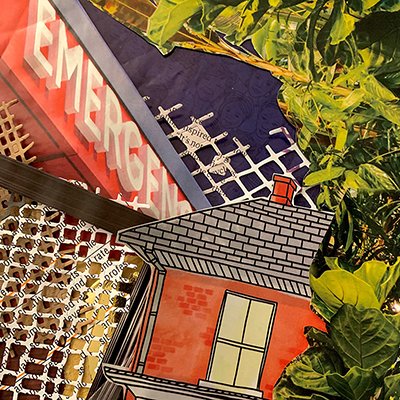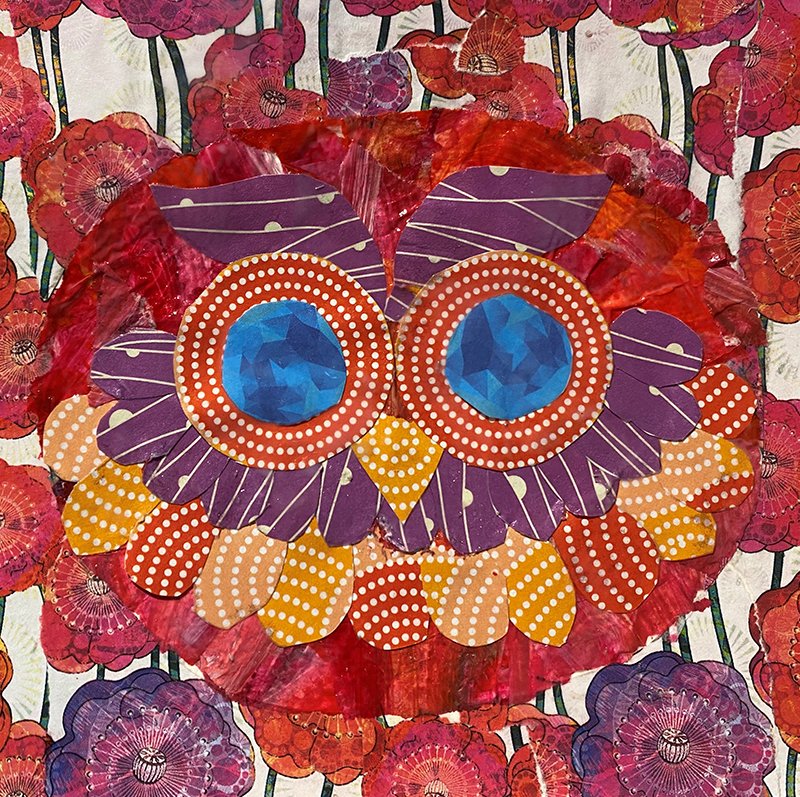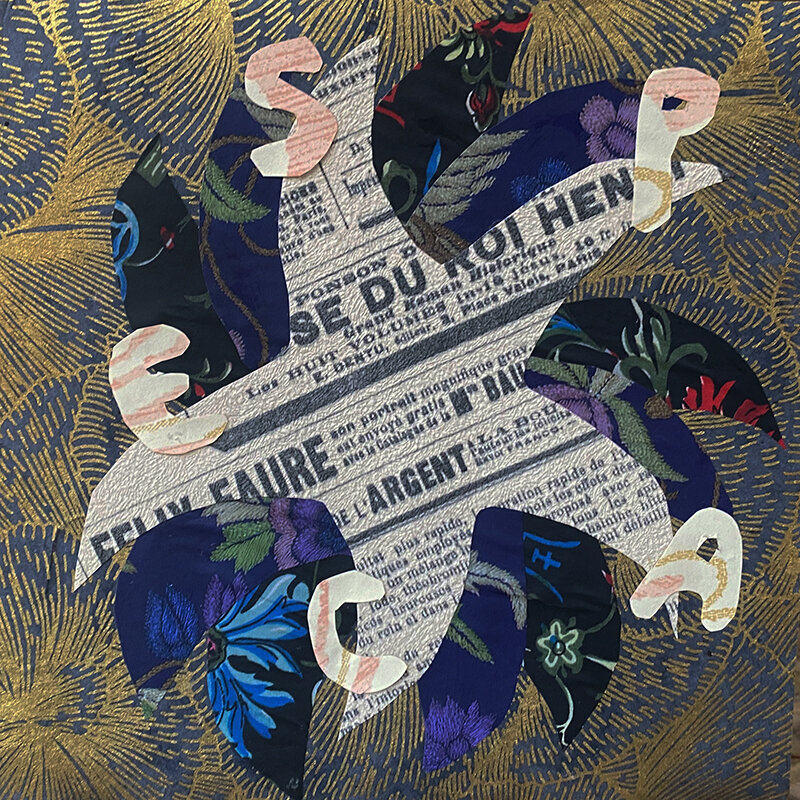When I first looked at this collage by WriteSPACE member Gail Prasad -- created during a virtual workshop at my Valentine's Day Extravaganza a few weeks ago -- I saw only a scene of destruction. The EMERGENCY sign from a hospital crashes into the roof of a tilting suburban house already half-submerged in rubble and half-covered by rampant jungle of green.
But then I looked again. In fact, the sign says EMERGE, with a hint of EMERGENCE. Leaves, lattices, and fragments of words emerge from the page, richly textured and layered. If you gaze long enough at the block of inky blue towards the top of the image, you'll see the faces of children emerging from the darkness. Below them, caught in the crumbling latticing, we glimpse the inspiring word inspired.
I asked Gail to tell me about her process of creating the collage. She replied:
I started with the image of a hospital emergency wing that I’ve had in a collection of images that I’ve been gathering over the past year. I spent this past summer at the hospital with my father as he battled a rare and aggressive form of lymphoma. In the midst of grieving his loss, the practice of “making” has been healing. What surfaced through this collage was the idea that in “EMERGENCY” and crisis there is also the possibility of the EMERGENCE of new life worlds. While they may not be the same, the past is woven into what grows up from the ashes.
An assistant professor of education at York University in Canada, Gail uses collage as a research method to help children, youth, and their teachers express social representations of languages and language learning. Here's an excerpt from a recent article on plurilingualism in children’s collages, in which she describes her own collage-making practice:
As a researcher-artist, when I relax into the creative process of gathering, layering, (re)combining and juxtaposing images, I am able to make new connections and allow ideas to surface that are substantively different than when I try to make sense cognitively of multiple pieces of information in the classroom or at my desk in my office. Rather than my head guiding my hand about what it should write, when I collage, the directionality of my thinking moves up first from my sensing of the materials in my hands as a I rearrange images, cut away parts or cover up pieces, up through my eyes as begin see new ideas, patterns and possibilities take shape, and then connect them in my mind and heart to what the composition reveals. (p. 908)
Reflecting on our Valentine's Day workshop, Gail noted further connections between collage-making and writing:
Your instruction that our collages could be photographed without actually gluing the layers down was freeing. It allowed me to take a picture of the work in progress and to see connections emerge – all with the assurance that I could make adjustments and additions to polish it later. I see the parallels to my writing. Sometimes I need to simply get thoughts on the page so I can take a step back to see the connections I am making both explicitly and more intuitively. It takes time for the ideas to settle into one another.
At a time when so much else in our world seems unsettled and askew, what new words might emerge from our emergencies? How can we use our writing to help ourselves and each other heal?
I'd love to hear your thoughts!
Subscribe here to Helen’s Word on Substack to access the full Substack archive and receive weekly subscriber-only newsletters (USD $5/month or $50/year).
WriteSPACE members enjoy a complimentary subscription to Helen’s Word as part of their membership plan (USD $15/month or $150/year). Not a member? Join the WriteSPACE now and get your first 30 days free.
































